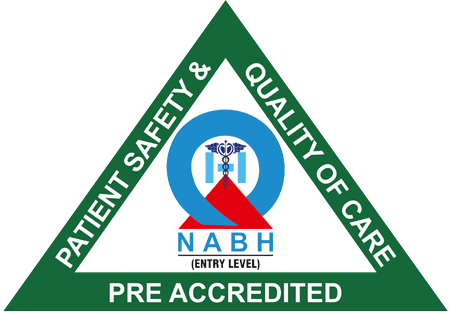COPD (Chronic obstructive pulmonary disease) refers to a group of lung diseases that causes irreversible obstruction to the airflow throughout the lungs, making it difficult to breathe. Chronic bronchitis is a type of COPD characterized by long-term inflammation of the airways, leading to increased mucus secretion and airways obstruction.
This mucus and the swelling of the tubes make it harder for your lungs to move oxygen in and carbon dioxide out of your body. To be more specific chronic bronchitis occurs when you must have a cough and mucus most days for at least 3 months a year, for 2 years in a row.
What causes chronic bronchitis?
It occurs when long-term exposure to irritants tends to damage your lungs. Numerous factors can cause bronchitis, but out of all, Smoking is identified as the main causative factor for bronchitis. Other causes include:
Atmospheric and industrial pollutants, chemical fumes, or dust from the environment or workplace.
Also, infection of the upper respiratory tract may precipitate bronchitis.
Physical factors like a sudden change in temp and fog.
It can have a genetic reason where there is alpha-1 antitrypsin deficiency which leads to a collapse of the airways.
Risk factors for chronic bronchitis
Individuals who are at a higher risk of developing bronchitis are:
Smokers: Smoking and bronchitis seem to have a strong association, as it has been seen that the majority of the people who smoke tend to develop bronchitis over time.
Age: It is commonly seen in individuals above 40 years of age.
Genetic: It is most likely to occur in individuals having a deficiency of the alpha-1 antitrypsin enzyme.
Signs and symptoms of chronic bronchitis
In the initial stages, you may have no or mild symptoms. But as the disease progresses, symptoms tend to worsen. The symptoms include:
Frequent coughing: You may experience continuous coughing bouts and heavy mucosal discharge.
Breathlessness: There is extreme shortness of breath, usually more in the morning due to increased mucosal secretion. You may be unable to perform physical activities like walking, running, etc.
Wheezing: sound occurs while breathing. You may experience tightness in your chest, which makes you breathe forcefully—a whistling or squeaky sound when you live.
Sometimes, due to continuous coughing, mucus may also be associated with blood stains.
Some people with chronic bronchitis get frequent respiratory infections such as colds and the flu. In severe cases, chronic bronchitis can cause weight loss, weakness in your lower muscles, and swelling in your ankles, feet, or legs.
Other symptoms may include:
Bluish fingernails, lips, and skin because of lower oxygen levels.
How to diagnose chronic bronchitis?
The initial step is that your pulmonologist will record your complete medical history and expect you to undergo a physical examination. He or she may prescribe you to experience the following investigations:
Pulmonary function tests
These tests estimate the lungs’ capacity to move air in and out of your lungs. The tests are often done with special machines that you breathe into. They may include:
Spirometry: This test uses a spirometer, a hollow tube-like device to see how well your lungs can inhale and exhale. The patient is asked to exhale forcefully, generating a graph on the monitor. It is one of the simplest, most common pulmonary function tests. It may be used for any or all of these reasons:
Find out how well your lungs take in, hold, and move air.
To keep an eye on any lung disease.
To see the progress of the treatment.
Peak flow monitor: This test measures the fastest speed you can blow air out of your lungs. The recordings are then noted later. Inflammation of the airways and mucus accumulation make it difficult for the person to exhale and slow the air’s speed. It can be measured with a peak flow monitor. This measurement is critical in telling how well your disease is being controlled.
Arterial blood gas analysis:
This blood test checks the oxygen and carbon dioxide concentration in your blood. If the amount of carbon dioxide is more, then it is an indication of obstructive pulmonary disease.
Pulse oximetry
An oximeter is a small machine that measures the amount of oxygen in your blood. To get this measurement, a small sensor is taped or clipped onto a finger or toe, and the machine is switched on, giving a digital reading of the oxygen concentration in your blood.
Chest X-ray:
A chest x-ray can be taken to evaluate the status of the lungs and to look for the position of the diaphragm.
CT scan
This imaging test uses a combination of X-rays and computer technology to make images of the body. A CT scan shows detailed images of any body part, including the bones, muscles, fat, and organs, and CT scans are more complicated than general X-rays.
What should be the treatment protocol?
Bronchitis can’t be cured entirely, but measures can be taken to slow the disease’s progress and get symptomatic relief.
The prime step would be to avoid the causative factors:
Avoidance of bronchial irritants: This includes quitting Smoking if you are a smoker.
Bronchodilators are a group of medicines that can be given to relax the muscles around your airways, and this helps open your airways and makes breathing easier. Most bronchodilators are inhaled, which may also contain steroids to reduce inflammation in more severe cases.
Eg : salbutamol, terbutaline, ipratropium bromide(severe cases).
Antibiotics can also be given if there is any lung infection.
Drugs like bromhexine and carbocysteine can be given, which are mucolytic agents and cause thinning of the mucosal secretions.
Oxygen therapy: if you have severe chronic bronchitis and low oxygen levels in your blood. Oxygen therapy can help you breathe better.
When to see a doctor?
See your doctor if your cough:
- It lasts more than three weeks
- It prevents you from sleeping
- It is accompanied by a fever higher than 100.4 F (38 C)
- Produces discolored mucus
- Produces blood
- It is associated with wheezing or shortness of breath



